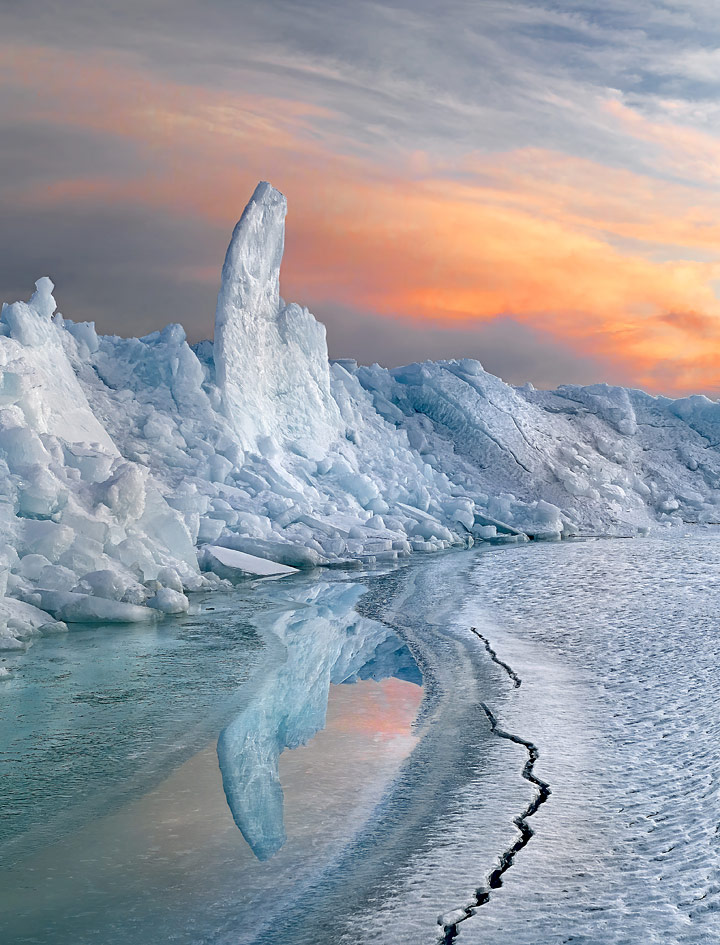I am fortunate to live in Wisconsin, at the tip of an 80-mile-long peninsula that extends into Lake Michigan. There are wonderful photographic opportunities in every season, but my favorite time is winter. This doesn’t mean that photographing during this season is always easy or pleasant, and the image I captured is a perfect example of that.
Ice shoves are a phenomenon that occurs every winter, but they rarely appear in the same location. Typically, from late February to early April, the bay ice sheet begins to break up. The conditions necessary for ice shove formation include a strong offshore wind that breaks up the ice and pushes it out, followed by a strong onshore wind that pushes the ice back toward shore. The mass and momentum of the moving ice can be tremendous. When the front of the moving ice is halted by the shore or a shallow reef, the ice behind continues to move, causing it to pile up into a shove. These formations usually develop within just a few hours and can range in height from a few feet to up to 40 feet. However, they are highly unstable, making them dangerous and their appearance fleeting. They can be photogenic for only a short time before a snowstorm covers them or they collapse.
I began exploring one ice shove the morning after it formed and was delighted to find a large slab of ice tipped vertically, making it one of the most photogenic ice shoves I had ever seen. The dangerous aspect of this shove was that it was about 100 yards offshore, and the ice was not stable enough for me to risk walking out to it, so I explored it only with my drone. When I returned to capture the sunset, I discovered that meltwater had formed a small pool on the ice during the day, which created a beautiful reflection that became the subject of my composition.lection that became the subject of my composition.


